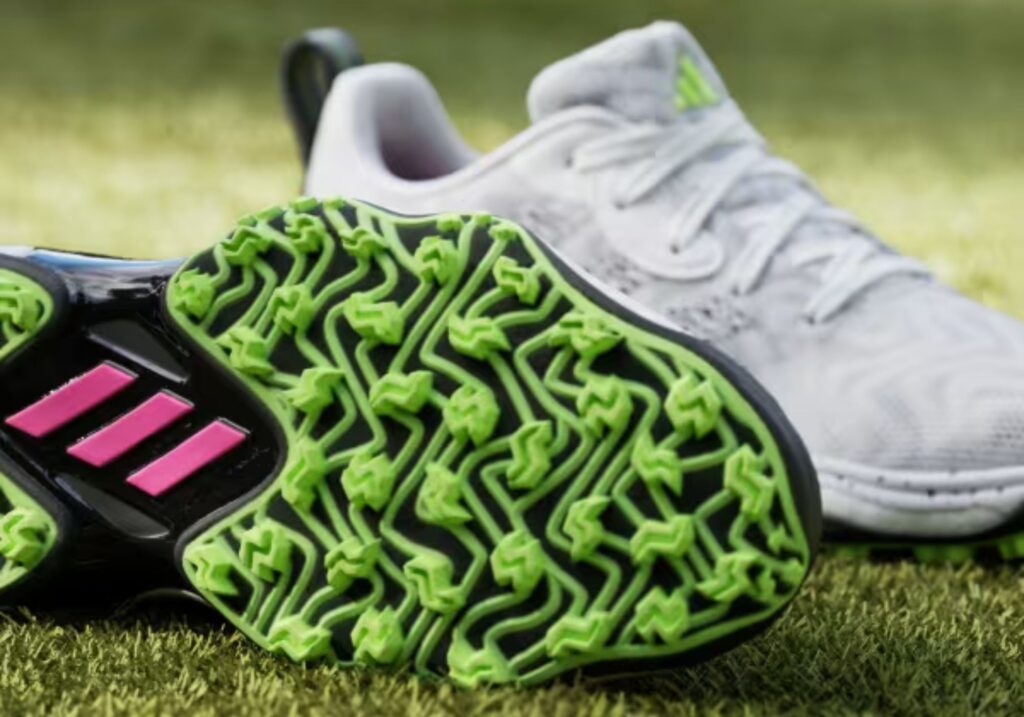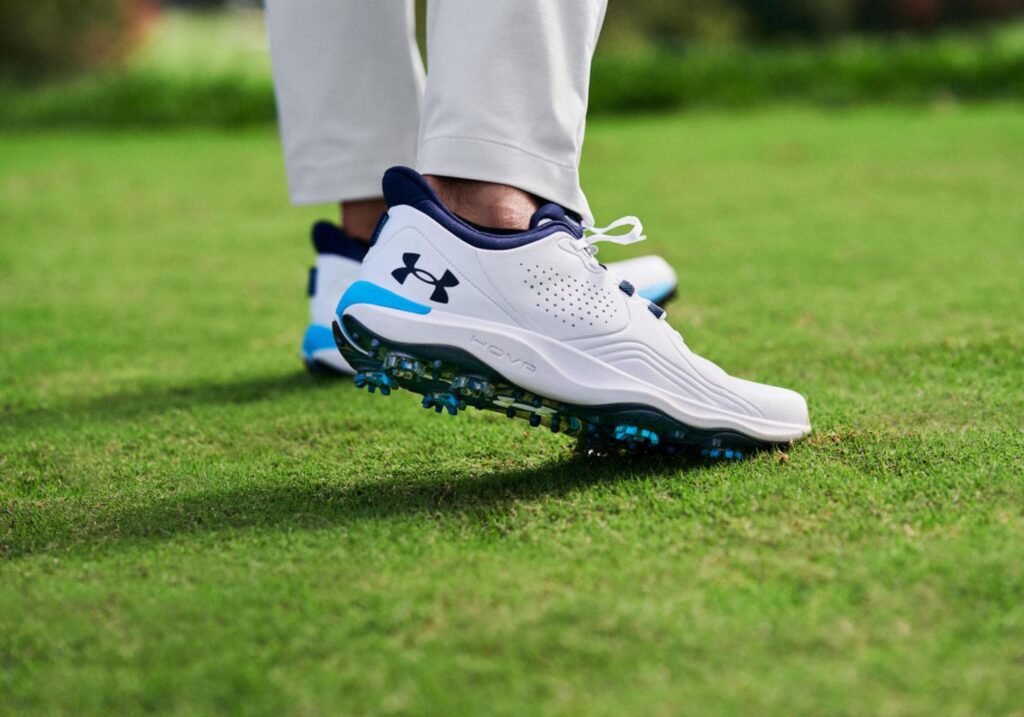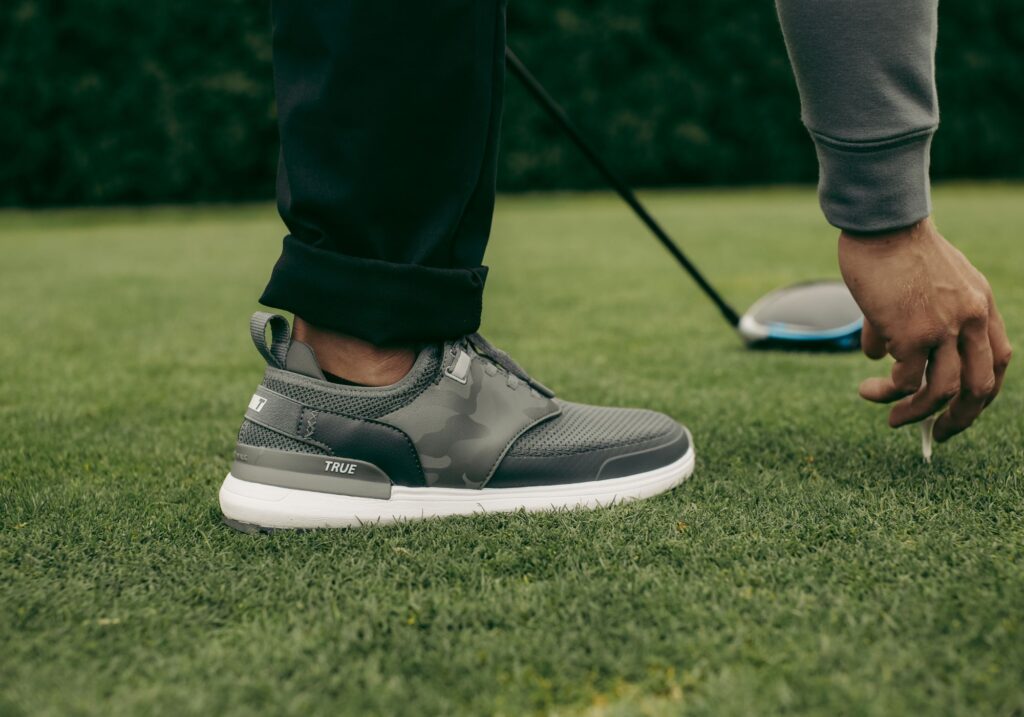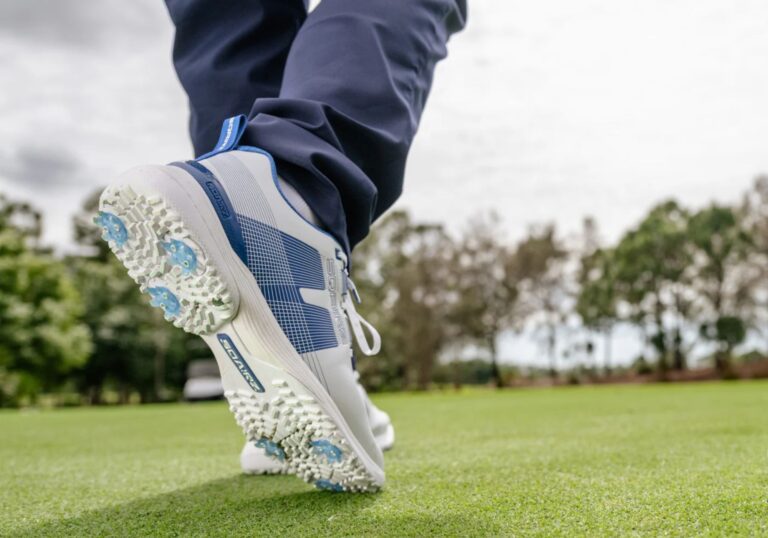Are Your Golf Shoes Helping or Hurting Your Game?
If you’ve ever slipped during a swing, felt soreness after nine holes, or walked off the course thinking about your feet instead of your score, it might be time to rethink your shoes. Golf shoes aren’t just about looks, but rather they’re about traction, comfort, and support through every step and swing.
Whether you walk, ride, or play all-year in all-weather, the right pair of shoes can make a big difference. This guide breaks down the main types, key features to consider, what affects price, and which style might best suit your game.

The Core of Golf Shoes
Most golf shoes fall into one of three categories. Each has a unique purpose, fit, and feel.
1. Spiked Golf Shoes
Best for: Players who want maximum grip, especially in wet or uneven conditions
Key features: Replaceable soft spikes on the sole for traction
Pros: Great grip on hilly or wet courses, especially useful for aggressive swingers
Cons: Slightly heavier, spikes wear out and need replacing
If you often play in the rain, early mornings, or on lush, soft courses, spiked shoes are hard to beat. They offer solid ground connection and stability during the swing.
2. Spikeless Golf Shoes
Best for: Golfers who prefer comfort, convenience, and versatility
Key features: Molded rubber traction patterns instead of replaceable spikes
Pros: Lightweight, great for walking, often more stylish and wearable off-course
Cons: Can lose grip in wet or soft conditions, not ideal for muddy or hilly terrain
These are incredibly popular, especially among players who walk or want a shoe that transitions easily to the clubhouse or even everyday use.
3. Hybrid / Performance Sneakers
Best for: Golfers who value comfort but still want structure
Key features: Blend of athletic sneaker comfort with golf-specific outsoles
Pros: Stable, cushioned, and supportive, often water-resistant
Cons: Not as technical as traditional spiked shoes, may lack feel for purists
Great for players who want to stay comfortable without giving up performance. Many hybrid models strike the perfect balance for casual and competitive rounds.

What Makes Some Shoes More Expensive?
Just like with most golf gear, you’re paying for materials, technology, and overall build quality.
- Materials: Premium leather or knit uppers add comfort and durability
- Waterproofing: High-end shoes feature full waterproof membranes, not just coatings
- Outsole Tech: Proprietary traction systems, torsion control, and stability platforms cost more to engineer
- Comfort Systems: Integrated cushioning, arch support, and orthopedic shaping vary widely in quality
- Longevity: Better shoes last longer without losing structure or shape
A good rule of thumb: shoes under $100 may feel great at first but might not hold up for more than a season. Spend $170 or more, and you’re likely getting all-day support and durability for years of regular play.

Key Features to Consider
Fit and Sizing
Always prioritize fit over style. A shoe that’s too loose causes instability; too tight creates discomfort and hot spots. Consider:
- Width Options: Some brands offer wide or extra-wide sizes
- Heel Cup: A snug heel fit prevents sliding and adds stability
- Toe Box: There should be just enough room to wiggle your toes
- Try With Golf Socks: Always test shoes wearing the socks you play in
Traction System
What kind of grip do you need? Think about your swing style and the courses you play.
- Soft Spikes: Replaceable and customizable, ideal for slippery or hilly courses
- Molded Rubber Lugs: Spikeless designs work best in dry, firm conditions
- Multi-Directional Patterns: Help stabilize both lateral and rotational movements during the swing
Cushioning and Comfort
Look for features that support walking, standing, and swinging over 4+ hours:
- Foam Midsoles: Lightweight cushioning for all-day comfort
- Insole Design: Removable insoles let you swap for custom orthotics if needed
- Heel Support: Helps absorb shock on heel strike and adds walking comfort
Waterproofing and Breathability
Weather conditions matter. Do you play year-round or mostly in dry months?
- Waterproof Membranes: Offer full protection, often backed by 1- or 2-year warranties
- Water-Resistant Uppers: Good for dew or light rain, but not true waterproofing
- Mesh Panels or Venting: Help keep feet cool during warm summer rounds
Weight and Flexibility
Lighter shoes reduce fatigue, while more structured models offer better support for faster swings.
- Walkers: Go light and cushioned
- Power Players: Choose a slightly stiffer build with better lateral support
- Push Cart Users: Something in the middle often works best

Which Shoe Style Fits You?
| Golfer Type | Recommended Shoe |
|---|---|
| Walks often | Lightweight spikeless or hybrid sneaker-style shoe |
| Plays in wet or hilly areas | Spiked shoe with full waterproofing |
| Cares about style and versatility | Spikeless shoe that doubles as streetwear |
| Has foot pain or past injuries | Structured, cushioned shoe with arch support |
| Plays mostly in summer or dry conditions | Breathable knit or mesh shoe |
| Rides every round | Structured, stable spiked shoe or waterproof spikeless |
Final Thoughts: Don’t Ignore Your Feet
A good golf shoe might not shave strokes off your game instantly, but the comfort, grip, and stability they offer can absolutely help you swing more freely and finish stronger. Whether you’re walking a quick nine or grinding through 36 holes in a day, your feet will thank you for the upgrade.
Plus, let’s be honest, shoes are part of your style. Find a pair that looks good, feels better, and supports how you play.
What Are You Wearing on the Course?
Got a favorite pair of shoes? Just switched to spikeless or discovered the magic of waterproof leather? Let us know in the comments. Your feedback could help another golfer find their perfect fit.
